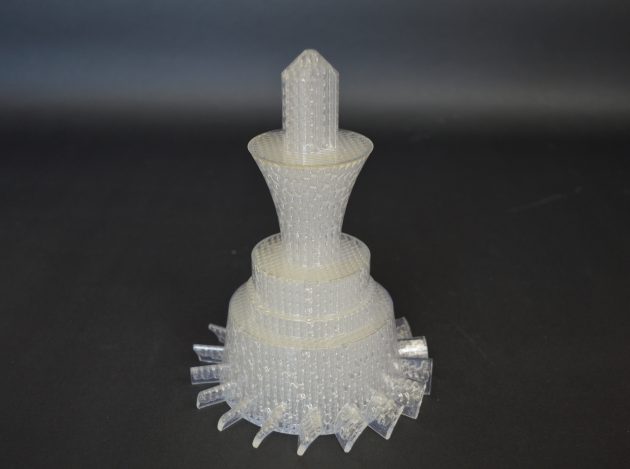

Steps involved in Quick Cast and Cast Form Techniques Casting. These wax parts can be melted out of the slurry cast at low temperatures and leave virtually no residue. Master patterns are made using rapid prototyping techniques followed by investment casting. Parts with complex internal channels are also ideal candidates because unlike SLA master patterns which have supports that may be impossible to remove, the SLS foundry pattern uses unsintered powder for support during the build which can then easily be blown out with air. These wax infiltrated parts have a sand like texture and are a good choice when a perfect surface finish is not required. SLS master patterns are essentially polystyrene based 3D printed parts that are infiltrated with foundry wax post build. SLA casting patterns are typically built utilizing the QuickCast build style. QuickCast is an ideal method for producing patterns for investment casting. Axis Prototypes uses a resin that has an extremely low ash residue and antimony after burnout. Utilizing additive manufacturing methods for investment casting patterns. The several overloads avaliable in this class can be used to cast a named function into its respectively delegate. They typically require a flash firing oven to burnout properly. QuickCast patterns offer invaluable shrink and gating information prior to hard tooling, large pattern size, smooth surfaces, and accelerated timelines over tooling to create wax patterns. Prototype castings with small features and details as well as large Quickcast parts work well for this process. SLA master patterns also referred to as Quickcast prototypes are thin walled parts (.015″) with a honeycomb structure inside to add strength and integrity.

However, both have their advantages and it is important to understand them in order to properly choose the correct process for each application. SLA prototypes as well as SLS prototypes are ideal candidates to use as master patterns when casting metal parts in foundries. Lanas Quick is a chunky two ply in a range of heathers and color-injected mlange shades, using the same special blend of South American wools as the. QuickCast patterns offer invaluable shrink and gating information prior to hard tooling, large pattern size, smooth surfaces, and accelerated timelines over.


 0 kommentar(er)
0 kommentar(er)
